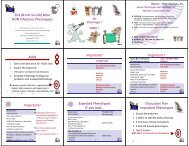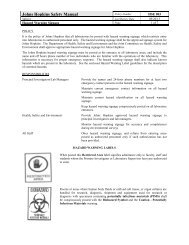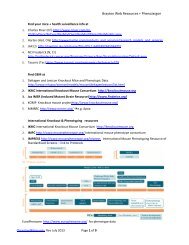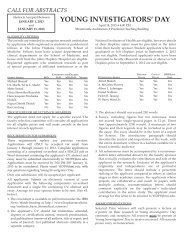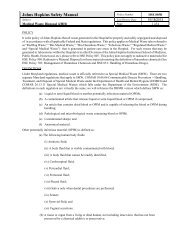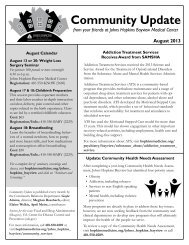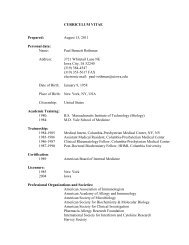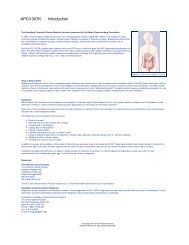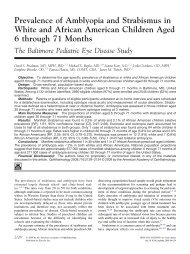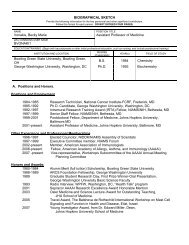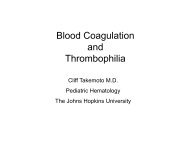Overview Key Concepts Anesthetic Management Anesthestic ...
Overview Key Concepts Anesthetic Management Anesthestic ...
Overview Key Concepts Anesthetic Management Anesthestic ...
Create successful ePaper yourself
Turn your PDF publications into a flip-book with our unique Google optimized e-Paper software.
Small animal Anesthesia for Imaging<br />
C Garrett 2012<br />
<strong>Anesthestic</strong> Selections<br />
Understand your model and your<br />
mouse!<br />
‣ Strain sensitivity<br />
‣ Genetic modifications (e.g. γ-PKC -/- )<br />
Sonner et al. Anesth Analg 89:1030 – 40 (1999)<br />
<strong>Anesthestic</strong> Selections<br />
Understand your model and your<br />
mouse!<br />
‣ Strain sensitivity<br />
‣ Genetic modifications (e.g. γ-PKC -/- )<br />
‣ Co-morbidities<br />
‣ Organ dysfunction (e.g. DCM, hepatitis, renal<br />
tumors)<br />
‣ Physiologic changes (e.g. hypertension,<br />
bradycardia)<br />
General Anesthesia<br />
1. Loss of consciousness<br />
2. Suppression of muscle activity<br />
3. Analgesia<br />
‣ Single agents (e.g. inhalants)<br />
‣ Combinational therapy (e.g. injectables)<br />
All anesthetic agents have side-effects!<br />
Inhalant Anesthesia<br />
Pros ‣ Rapid induction and<br />
recovery<br />
‣ Titration to effect<br />
‣ Fine control over depth<br />
‣ Minimal residual side-effects<br />
Cons<br />
‣ Newer agents: minimal<br />
organ metabolism<br />
‣ Respiratory depression<br />
‣ Require specific equipment<br />
(e.g. vaporizer, intubation or nose<br />
cone)<br />
Injectable Anesthesia<br />
‣ Does not require specific<br />
equipment<br />
‣ Many types/ combinations<br />
‣ Familiarity<br />
‣ Delayed anesthetic<br />
induction and recovery<br />
‣ Variable side-effects<br />
‣ Renal/hepatic metabolism<br />
‣ Often blind administration<br />
Injectable Anesthesia<br />
‣ Pentobarbital: potentiates GABAnergic neurotransmission<br />
‣ Frequently used agent: hypnosis → anesthesia<br />
‣ Cardiopulmonary depression is dose-dependent<br />
‣ May require ventilatory support with severe respiratory depression<br />
‣ Administration: Mice 50 – 90 mg/kg; Rats 30 – 45 mg/kg (IP)<br />
‣ 2-2-2 Tribromoethanol (Avertin®):<br />
‣ Short-acting 15- 30 minutes of anesthesia<br />
‣ Good muscle relaxation, mild respiratory depression<br />
‣ Purchased as a chemical grade product and requires reconstitution<br />
‣ Light and temperature sensitive: degraded bi-products can cause delayed<br />
nephro/hepatotoxicity and gastrointestinal stasis<br />
‣ Increased fatalities with multiple IP administrations (best for single survival<br />
terminal/acute use)<br />
2



